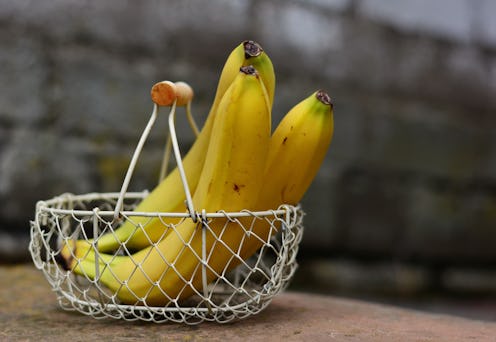Life
Someone Developed A Banana With A Peel You Can Actually Eat — Here’s What It Tastes Like
You know how seedless grapes are god's gift to the earth? Well, now if you have money to blow and a desire to go overseas, you can take your fruit intake to the next level with the latest innovation:
Japanese scientists have developed bananas with an edible skin. This new innovation is called the "mongee" (pronounced MON-gay) and it's definitely the next best thing since dried mango slices were invented.
How does this mongee-making process work, you may ask? The Japanese agricultural research company D&T Farm are the masterminds behind this. According to their website, its creation started out as an experiment by the company's technical development manager Setsuzo Tanaka. Tanaka decided to grow the farm's banana trees in a -59 degrees Celsius (-75 degrees Fahrenheit) environment, ensuring that it is as frozen as possible. Regular bananas are usually grown in tropical temperatures of around 80 degrees Fahrenheit, so this interesting reversal means you'll get some unexpected variations for results...
After the freezing, the saplings are thawed and replanted. Basically it ensures that the fruit grows while leaving the skin with a soft texture that you can chew through, kind of like lettuce.
This method is called “Freeze Thaw Awakening”, when translated. And Tanaka didn't just come up with this idea in the middle of the night — as the Nikkei Asian Review points out, it's been done before, thousands of years ago. The farm extracts and implements the DNA of fruits to help them grow in cooler climates, because the ancients apparently did this in medieval times when the earth had a different temperature during the Ice Age.
According to the Nikkei Asian Review, Tanaka invested a total of 500 million yen (which is the same as $4.3 million in U.S. dollars) of his own money to fund the research. He said it usually takes two years for bananas to grow large enough to be picked, but under the farm's greenhouse conditions, they're now ready to eat in four months.
Mongees average at 24.8 grams of sugar compared to the average 18.3 grams for its tropical counterparts, according to Tokyo-based news website RocketNews24. This means they are sweeter, stickier and smell more than an average banana.
A cursory glance at the translated English site of D&T Farm reveals the company is also planting cold-resistant blue papaya and other crops such as various potted plants. This farm is clearly taking technology to the next level. The bad news is, these bananas aren't a common feat yet: production costs are high enough to where only 10 can go on sale each week at a time. They're only sold in Okayama prefecture, an area of western Japan, for an individual price of 648 yen. That adds up to $5.75 when you convert it to U.S. dollars.
You might be gasping at how prices could be so atrocious when you can step into a grocery store here in the States and get a bunch for less than $3. But as Japan imports much of their bananas from overseas (it isn't tropical enough to grow them except on specialized farms like D&T), this new banana being native to the region means prices aren't going to be pretty either.
For those who are skeptical about consuming these babies, you can see the results after eating: journalists from RocketNews24 ate some last month. They described the peels as surprisingly thin without a weird texture, possessing a “very strong tropical flavor," and ultimately “fairly easy to eat.” The braver reporters also apparently tried an Ecuadoran banana and did not find a similar result with that peel.
In any case, if you want to fly over to Okayama and try one for yourself, it sounds like a tasty endeavor!
